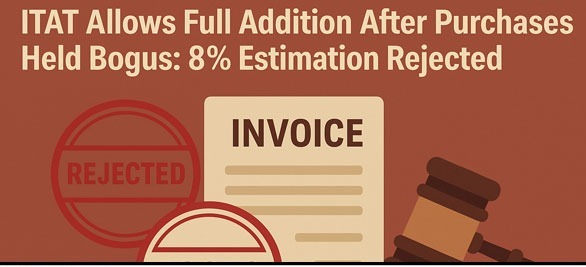Beachcroft, J.@mdashThe plaintiffs are the appellants in this appeal. Their case was that they had a Mourashi Mokarari Jama of Rs. 102-6-0 under Talukdars known as biswas. It appears that oat of this, one ligha and 19 cottas were let oat to the defendants at a rental of Rs. 10. The plaintiffs allege that the status of the defendants was that of under-Baiyats, that they gave notice u/s 49 of the Bengal Tenancy Act and that as the defendants did not give up possession, they had to bring this suit for ejectment. The defence was that the defendants were either under tenure-holders or were at the least occupancy Baiyats, the plaintiffs being tenure holders and that, therefore, Section 49 of the Bengal Tenancy Act had no application. The question, then, primarily is one of status, if the plaintiffs are Baiyats and the defendants are their under-Baiyats, the plaintiffs are entitled to eject them after notice u/s 49. On the other hand if the plaintiffs'' status was higher than that of a Rtiyat and the defendants were at the least Baiyats, then the defendants were not subject to ejectment on notice. The suit was dismissed by both the Courts below, both Courts holding that the onus his on the plaintiffs to prove their status. Both the Courts held that the plaintiffs bad failed to prove that the defendants were Baiyats and dismissed the suit.
2. The drat ground taken in appeal before me is of a technical, the others deal with the merits of the case. The Sabardinate Jaige who heard this appeal used to hold sittings at three different places, namely, Hoogly, Howrah and Serampore. During his absence from Hoogly, where this appeal was heard, tae duties of his office ware discharged by (sic) ordinate Judge at the station. This particular appeal was, as I have said, heard at Hoogly by the learned Sabordiaate Judge who did not deliver tae judgment himself, but it was delivered by tae Other Sub-Ordinate judge was used to do due duties of his office in his absence. It is not suggested that the judgment Of Baba (sic.)Ghose, that it was the judgment of the other Subordinate Judge Babu K.N. Chowdhury, who delivered it. But the point taken is under Order XX, Rule 2 of the Code of Civil Procedure, that Babu K.N. Chowdhury was not competent to deliver the judgment written by Babu Ashutosh Ghose. That rule provides: "A Judge can pronounce a judgment written but not pronounced by his predecessor." Whether in the circumstances of this case Babu Ashutosh Ghose can be spoken of as the predecessor of Babu K. N. Chowdhury is, to my mind, very doubtful. But as I have remarked, the point is purely a technical one and there is no substance in it. For the mistake could be remedied even now by sending the judgment to Bibu Ashutosh Ghose and asking him to send it to his successor for delivery, for he has now left the District and I am told that he has actually retired, if it were considered necessary to have a formal compliance with the terms of Order XX, Rule 2. I do not consider that effect should be given to this contention.
3. As regards the merits, the main point taken is that the Courts below were wrong in patting the onus on the plaintiffs; The other point taken is that certain words in Exhibit (5), which is a title deed of the plaintiffs, only bear the construction that the plaintiffs were Raiyats and not tenure-holders. On the first point the argument, which is an argument on general principles on the question of status between landlord and tenant, is that the onus lies on the tenant to prove his title and not on the landlord. The learned Munsif ad nitted that general principle but he held, "Hate the tenancy is admitted by the plaintfffs but the plaintiffs allege that the tenancy is of a. particular character and that they are entitled to determine it according to Section 49 of the Bengal Tenancy Act," and that, therefore, the onus should be on the plaintiffs to prove that they were entitled to terminate the tenancy in that way, the fact of the defendants'' tenancy being admitted. That view was accepted by the learned Subordinate Judge, so far as I can gather from his judgment. That view was pressed here also among other arguments, not the least cogent of which was that when a person is in a position to prove a particular fact the onus lies on that person. Here the plaintiffs being the persons in a position to prove their status and also the status of the defendants, it is at least arguable that it was for the plaintiffs to discharge the onus, the proof of the necessary facts being primarily in their possession. A good deal can be said from both points of view. But it appears to me that it is not necessary to decide the question, whether the onus was placed on the right person or not, because the lower Courts have come to a finding on facts that the status of the plaintiffs is not that of Raiyats but of tenure-holders. The possibility of this view being taken was realised by the learned Plader for the appellants for he argued that as the onus was wrongly placed, the case should be remanded for a fresh finding on facts as the misplacing of the onus must have misled the lower Appellate Court and so vitiated its findings. No doubt, there are cases where the Court may be misled by placing the onus on the wrong side. But it cannot be laid down as a rule of law that findings of fact are vitiated whenever the onus is placed on the wrong party. Every case must be judged on its own facts. There is also no reason to dispute the proposition of the learned Pleader for the appellants that the question of status is a Question of mixed law and fact. What the learned Subordinate Judge says is "The plaintiffs have failed to substantiate their case." He then says that certain facts and documents proved to his satisfaction that the plaintiffs were not. Raiyats but tenure-holders. Then he refers to the certified copies of cerain Kobalss and Exhibit (5), the title deed of the plaintiffs and the oral evidence. He further remarked that the history of the tenure showed that the Jama of Rs. 102-6-0 for 41 big has and odd cottas of land was never acquired for agricultural purposes and that it was not an agricultural holding in its inception. He further pointed out that it was a Lakheraj property which was resumed and settled with the owners at the time of resumption and that a portion of the land was in the occupation of the tenants. On these facts, it appears to me that be was perfectly entitled to find that the status of the plaintiffs was not that of Raiyats but of tenure-holders.
4. In this connection I may refer to the remaining point, which was that certain words in Exhibit (5) showed that the status of the plaintiffs could not be that of tenure holders." In that document appear the words "Mourashi Mokarari Jamai Jami", and it is argued that the words can only apply to the case of a Raiyat and not to the case of a tenure-holder. No doubt if I were asked to say whether these words standing by themselves would apply to a Raiyat or to a tenure holder, my inclination would be to say that they describe the position of a Raiyat rather than that of a tenure-holder, but they are not necessarily inconsistent with the position of a tenure holder. The Judges in both the Court below were Bengali gentlemen and they may be presumed to understand their own language. They have held that these words were not inconsistent with the plaintiffs'' position as tenure holders.
5. It is pointed out by the learned Pleader for the respondents that there are other terms in the same document whereby the vendor declared that he had given a Darmckarari tenure to some other person and it is argued that this is inconsistent with the position of a Raiyat. It is not necessary to go further into this question, because as I have said, the finding of the lower Appellate Court is conclusive on the question of fact that the status of the plaintiffs was that of tenure-holders and not that of Raiyats.
6. That being so, the defendants the protected from ejectment u/s 49 of the Bengal Tenancy Act and this appeal must be dismissed with costs.

